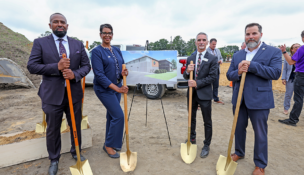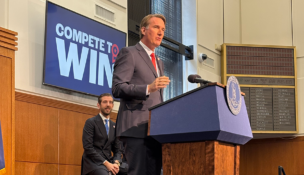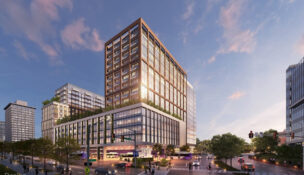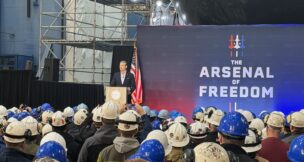Virginia’s business community needs to help groom future workers.
Virginia’s business community needs to help groom future workers.
If Virginia wants enough workers in the future, it needs to grow its own workforce, because a shortage is on the horizon. The importance of workforce skills to a robust economy was underscored Wednesday by Bob Templin, president of Northern Virginia Community College and one of the architects of a program that’s grooming high school students for post-secondary education.
Templin was one of the speakers at an economic summit in Williamsburg sponsored by the Virginia Chamber of Commerce that drew more than 600 people.
By 2022, there will be 840,00 new jobs in Virginia that require training beyond high school, he said. Another 1.2 million job vacancies are expected as the baby boom generation retires. “There will be more than 2 million jobs in 10 years to fill, mostly in science and technology. What’s our strategy for filling these jobs?”
Most of Virginia’s future population growth is expected to come from Latinos, other minorities and immigrants. Templin said the business community should work with schools to reach these groups to ensure they have employable job skills.
“We need to create business driven regional workforce alliances. It’s not about education doing something about itself. It’s about the business community working with education about what their requirements are. We need to invest in and leverage Virginia’s community colleges to close the skills gap … They are regionally focused and responsive to local economies,” he said.
The state also needs to increase high school graduation rates and get more students in post-secondary training that will lead to STEM-H (science, technology, engineering, mathematics, health) careers, where much of the job growth will be.
One approach, Templin said, is to create “plug and play” options for business engagement with schools and colleges. This would include work-based learning experiences, including internships and apprenticeships, and postsecondary programs that align with regional job market requirements.
“A high school diploma — in today’s market — is not aligned with post-secondary education or the realities of employment. We need to fix that.”
Templin told the audience at the Williamsburg Lodge of an initiative in Northern Virginia. Working with a partnership between the Northern Virginia Technology Council, local school systems, the community colleges and George Mason University, the program focuses on low-income, immigrant, first-generation college goers. Students interested in STEM-H careers are invited to sign a contract, starting in the 11th grade, that provides them with counselors who guide students through college preparation and while they attend Northern Virginia Community College. If students successfully complete the community college program, they are guaranteed admission to GMU.
Today, the Northern Virginia Community system has 8,000 of these students. “They are graduating from my college at twice the rate of my other students … These are kids who weren’t going to go to college. We now send more transfer students to GMU than they take in new freshman,” Templin said.
Such programs represent a low-cost way of growing the state’s workforce, he added, and they build on the shift in Virginia’s demographics.
Another challenge is making sure students go into fields where they will find jobs. As the federal government continues to cut defense spending, once lucrative fields in Virginia such as business and professional services will begin to shrink. Fields showing growth include leisure and hospitality and health and education services, which has been a major driver for growth.
In a presentation during the summit, Stephen Fuller, director of the Center for Regional Analysis at GMU, noted that Virginia expects more job growth between 2012-17, than between 2017-22. “The current forecast going out over 10 years shows that the economy is going to grow faster in the shorter than in the long-term …. This is a critical time in shaping the new economy in Virginia.”
Of some concern, Fuller added is that the state is “ adding lower-wage jobs faster than higher-wage jobs.”
Before the recession, Virginia’s economy outperformed the national economy. This year, though, the economy is projected to grow by 1 percent, compared to 1.5 percent for the U.S. economy, “which underscores our dependence on federal [Department of Defense] spending.” In 2012, 13 percent of Virginia’s gross domestic product came from federal contracting awards, the highest of any state.
Fuller agreed with Templin’s assessment that, in the near future, the state won’t have enough workers to fill 2 million jobs. “Some of the new population will be under 18, and other people who move here will be retired. “We’re going to have to steal some workers from other states,” he said.
“The next five years will make the difference. There’s a fork in the road. We can’t wait until 2018 to take it. You have to prepare for it. “
















